Every year thousands of men and women travel far from their homes and families, to work a few months in the harvesting of grapes, of Yerba Mate (the argentine herbal caffeine rich drink) among other harvests. They sleep in sheds, tents, gazebos (rustic tents) or small rooms, on old mattresses with a lack of bed linen and any form of hygiene, toilets/showers etc… The presidential COVID-19 decree which makes mandatory preventative social isolation has left many with their jobs abruptly paralyzed, stranded on farms or at bus terminals in different parts of the country. All forms of long distance public transport — trains and buses — have been cancelled for nearly five months in Argentina by presidential decree.
Many rural internal migrants have been abandoned to their fate by provincial governments and by land owners. Others however, were forced to continue working in precarious conditions. These are the migratory rural workers; this article is a journey through the situation of a sector present throughout Argentina, one which, due to its seasonality, mobility and geographical nature, suffers from chronically high levels of worker informality and precariousness; with people who have neither voice nor workers rights, and who suffer from conditions that predate the current pandemic.
Fernando Ruffa, ANRed
Ever since the beginning of the social, preventive and obligatory isolation decreed by President Alberto Fernández via a decree referred to by the number 297/2020 – a measure to slow the spread of the coronavirus (COVID-19) in Argentina – many rural migratory workers were abruptly suspended from their work, they became stranded on farms or in bus terminals, abandoned by the owners of the lands where they work and by their own governments, unable to return to their homes to comply with the quarantine. Others were forced to continue working under precarious work and health conditions.
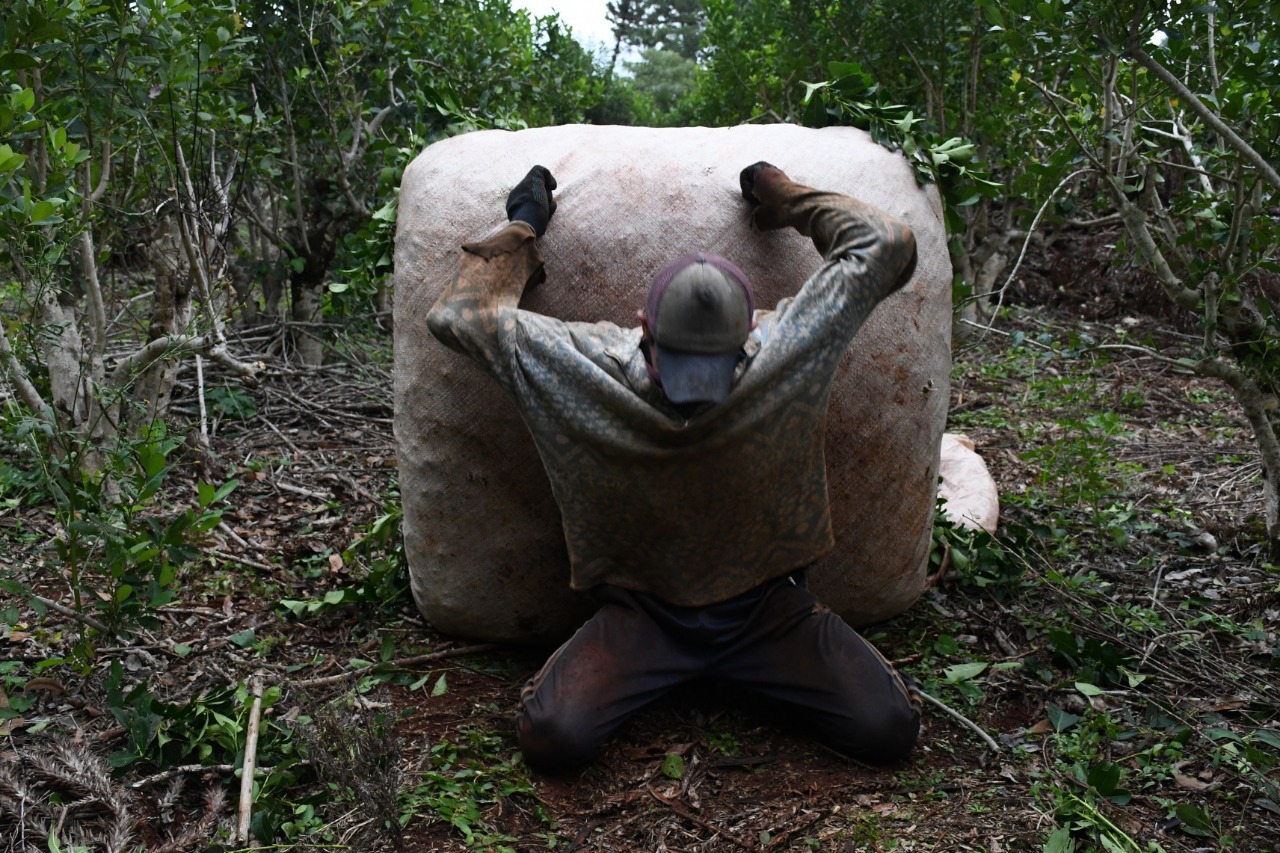
One example of this sector are the thousands of labourers who migrate to Mendoza every year to work on the grape harvest or for other short-term work opportunities. This year the mandatory quarantine caught out those who were picking the grape harvest but their work was allowed to continue. Declared ‘essential’, the businesspeople in the wine industry couldn’t be without their fruit, nor could they be left unable to sell wine. In a workplace where harvesters are paid by the basket-load, usually irregularly, not paying taxes, with no social services payments, regulation or benefits paid by employers (i.e. on the black market), working days can be very long.
«In Mendoza, rural workers were permitted to work, so as not to lose the harvest, but no one took responsibility for their journeys back to their homes.» There should have been coordination between the governments of the Provinces of Mendoza and Jujuy, also at a Federal level, which might have resulted in the availability of buses for secure authorized travel», reflected Laura Rodríguez from the Mendoza Human Rights Network, who, together with other social organizations, are assisting stranded families, many of whom wish to return home to the Northern Provinces of Jujuy or Salta. «The current situation is that people continue to arrive at the bus terminal daily, and they will continue to do so,» she added with concern. «There are some who arrive with a ticket and others that don’t, and some even appear without money to buy a ticket, because bosses on the farms have been telling them to leave due to the coronavirus. On top of this year’s harvest has been a bad one, people have worked less, and have been paid little.»
Two other provinces (Río Negro and Neuquén) also welcome thousands of travelling workers from a variety of Northern Argentine Provinces every season. These workers travel some two thousand kilometres to work, pruning, thinning and harvesting pears and apples. One side effect of the obligatory quarantine has meant that hundreds of these also became isolated in various places and were stranded. «We who work on the farms have no news. We are spending what little we have left of the salaries we’ve earned in these last few months. There are about five or six hundred people from Entre Ríos province (to the north) scattered around the valley. The only thing we ask is to be able to return to our homes, with our families, and to be able to complete the quarantine in peace», one of these (who had been working on a farm in the town of Cervantes, near the city of General Roca, Province of Río Negro) told ANRed with concern.
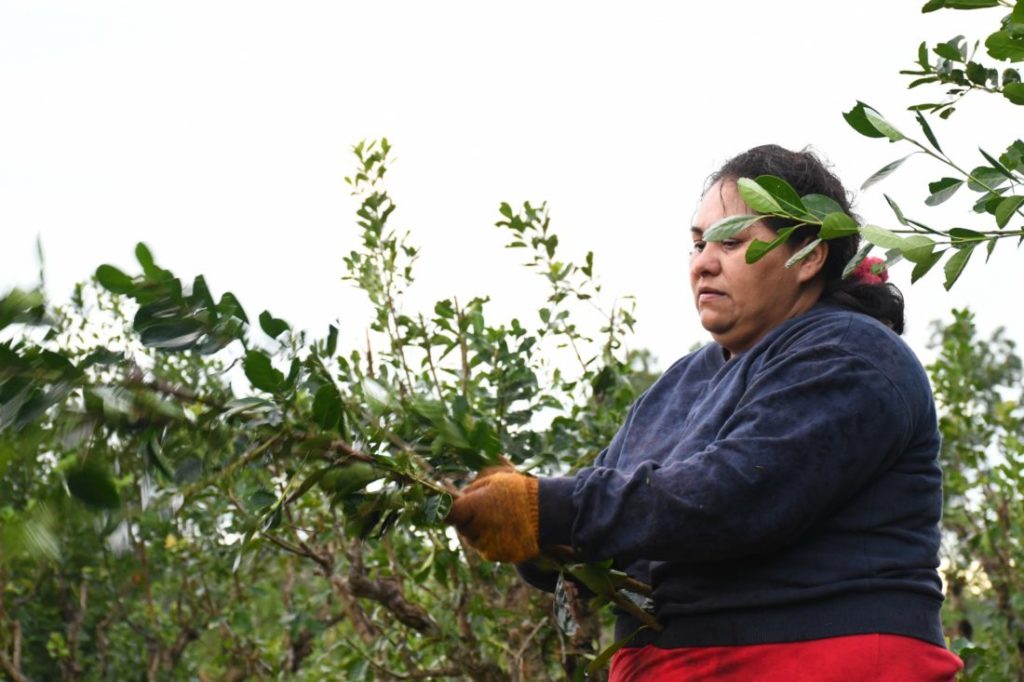
Migrant workers: predating the pandemic
Given the overall situations faced by internal rural migrant workers, this sector is quite a challenging one. Due to the seasonality and the socially mobile geographical nature of these internal migrations of seasonal workers, information on them is very scattered, and there are very high levels of worker informality (lack of contracts) in this sector.
Elena Mingo is a sociologist and a researcher with the Argentine Scientific and Technical Research Council (CONICET) at the Argentine Centre for Labour Research and Investigation Institute (CEIL). Elena works on a programme entitled: «Rural Work, Households and Organizations in Rural Spaces». She spoke with ANRed to shed some light on the sources, and the main characteristics, of this sector. «The traditional migrant labour circulation is one of the historical characteristics since the formation of regional economies for local Argentine food supply to the domestic market, so we find antecedents since the late Nineteenth Century,» the researcher explained.
«Bringing precariousness to recruitment and the seasonality of employment are the two structural characteristics upon which the working conditions are ‘organized’ for seasonal agricultural workers in intensive exploitation of farm workers. Also one has to take into account other dimensions that modify these structural characteristics, resulting in a diversity of situations within this labour sector. Among these, the condition of temporary migrant worker combines two variables that tend to deepen, and make more complex, the already structural conditions of precariousness».
«The migrations from the province of Santiago del Estero is one of the oldest,» says Mingo, «and the workers participate in several circuits, including: the manual harvest of corn husks, for seed production in the province of Buenos Aires. The ‘arrancada’ or potato harvest, in the Southwest of Buenos Aires Province, and, more recently, the Santiago del Estero and Catamarca circuit for the olive harvest».
«Another circuit which is also traditional is one where workers from the North of Argentina (predominantly Tucumán and Salta) make to the Provinces of Mendoza and Río Negro. These circuits start in December and last until April when the harvest ends. Another characteristic, but more recent, circuit is that of the migration of workers, men, to the province of Entre Ríos for forestation,» says the sociologist, who has been working since 2005 at CEIL, a research team with a long history in the field of rural sociology.
Likewise, the researcher considers that the history of the migratory rural workers is characterized by a «general historical context of making conditions invisible», as well as «a few interventions to the regulation of these forms of employment and hiring». That said she considers that «it is important to emphasize the sanction of Law 26,727 of «Agricultural Work Regime» (December 2011) which makes visible these forms of employment, especially those that are repeated year after year, under the figure of the ‘discontinuous permanent worker’.
In addition, it proposes in its articles the regulation of the travel conditions, housing, food and hygiene. In the framework of this law, the National Registry of Agricultural Workers and Employers (RENATEA) was created, which, according to the researcher, «worked on the regulation, inspection and visibility of these particular working conditions, reproduction strategies, housing and health,», she said and then clarified that RENATEA «was dissolved by the Supreme Court of Justice of the Nation in December 2015».
Regarding the current situation of workers stranded in the provinces they work in (due to the COVID-19) Mingo says that this novel situation makes all the more visible a chronic historical problem that predates the pandemic. «It exposes the enormous variety of situations of inequality and precariousness to which a huge portion of Argentinean women and men are subjected. These conditions are not typical of their work situation but are historical and only the pandemic makes them visible. In a sense, being «stranded» is something habitual for them.
The precarious conditions of employment often mean that promises to pay for a return ticket are not kept. What also happens is that they arrive at their destinations and don’t find employment quickly. This situation has them wandering and living in poverty until they manage to get in. Another aspect is that their work stay during the season also has its own peculiarities. Some hiring arrangements include housing in ‘collective’ houses on the farms. In other cases, they must rent housing during the season; these areas provide that housing service for temporary migrants, providing a source of income for local families.
Finally, the specialist emphasizes that it is important «to generate State or union interventions, to listen to the experience that these workers have about the migratory circuits and the ways in which they create relationships with their destinations, that have allowed them to sustain the reproduction of their lives and those of their families throughout decades».
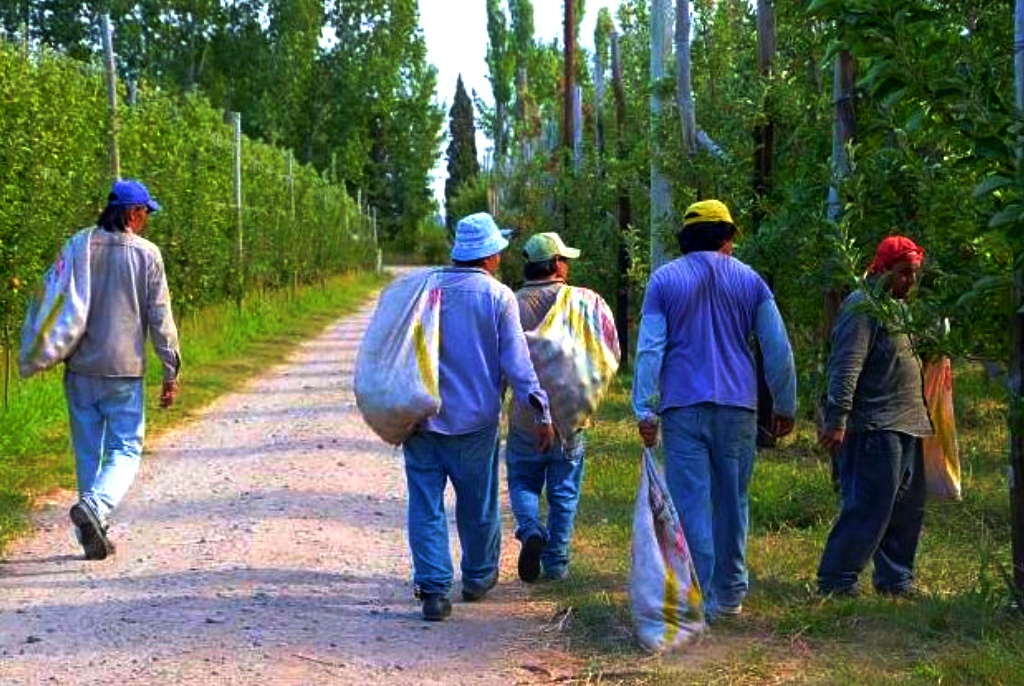
From South to Northeast
Moving on to the Northeast of Argentina, you also find similar working conditions. This is the case of the workers who are employed in the Yerba Mate — or just mate — (a kind of Argentine energising herbal tea) harvest in Misiones, some of whom also sometimes alternating a semester in other provinces, till they then return home.
Enso Ortt used to work in the Government Secretariat for Family Agriculture. Today he is in the Province of Misiones Organic Agriculture Network and has been working with organic farmers this way for 13 years. «Many of the transitory workers, migratory workers or manual labourers in the maté harvests, are the basis of the labour force for local productive chains – he notes giving us a general overview of the sector in the Misiones Province where the maté is grown. Here in Misiones there are migratory harvest workers or manual labourers who go to other provinces, generally young people, for Entre Ríos and Corrientes, for the blueberry harvests and the forestry work in Pine and Eucalyptus monoculture forests. They work there for two to three months in very precarious and isolated conditions. Many of them work totally in the black market (no benefits and no taxes) and work crowded in produce fields. The conditions in which they work, they way they live, pay little recognition of their important rôles in the chain of production of maté. Many are also employed in tobacco production.»
«Because many live far from the harvest, in poor neighbourhoods in other parts of the province of Misiones, the contractors who put together the unskilled labour force (tarefero) crews provide them with transport to their work, and, since they don’t have their own transport, many must stay in the farms where the maté is grown as harvests often last several days, depending on the quantity harvested. The legislation determines that the tarefero lodging must be in good condition; but that doesn’t actually happen. Often those who contract these workers have their tarefero workers living under tarpaulins where they sleep every night. They often have no running water and must cook outdoors so as to be able to work the whole week. Added together the seasons include add up to about six months, the rest of the year there isn’t any work to be done.
«The situation of the migratory workers in the area is very difficult and complex, says Federico Chilavert, General Secretary of the (Left of Centre) Union grouping: «Autonomous CTA» at their Montecarlo office, in the province of Misiones. There’s a group of nine comrades who were stranded in the apple harvest in Río Negro. They went because, here in Montecarlo, the maté harvest ends in September. So they went to harvest apples. Usually they finish the harvest there and return to the maté harvest, which begins in March. Then there are other workers from Paraguay and Corrientes, who come to harvest citrus, they also face a complicated situation, because despite being exempted (from government lockdown) they couldn’t work much because they are (off the books / informal) and above all, very precarious, workers, and the employers don’t comply with the requirements of the presidential COVID-19 decree.
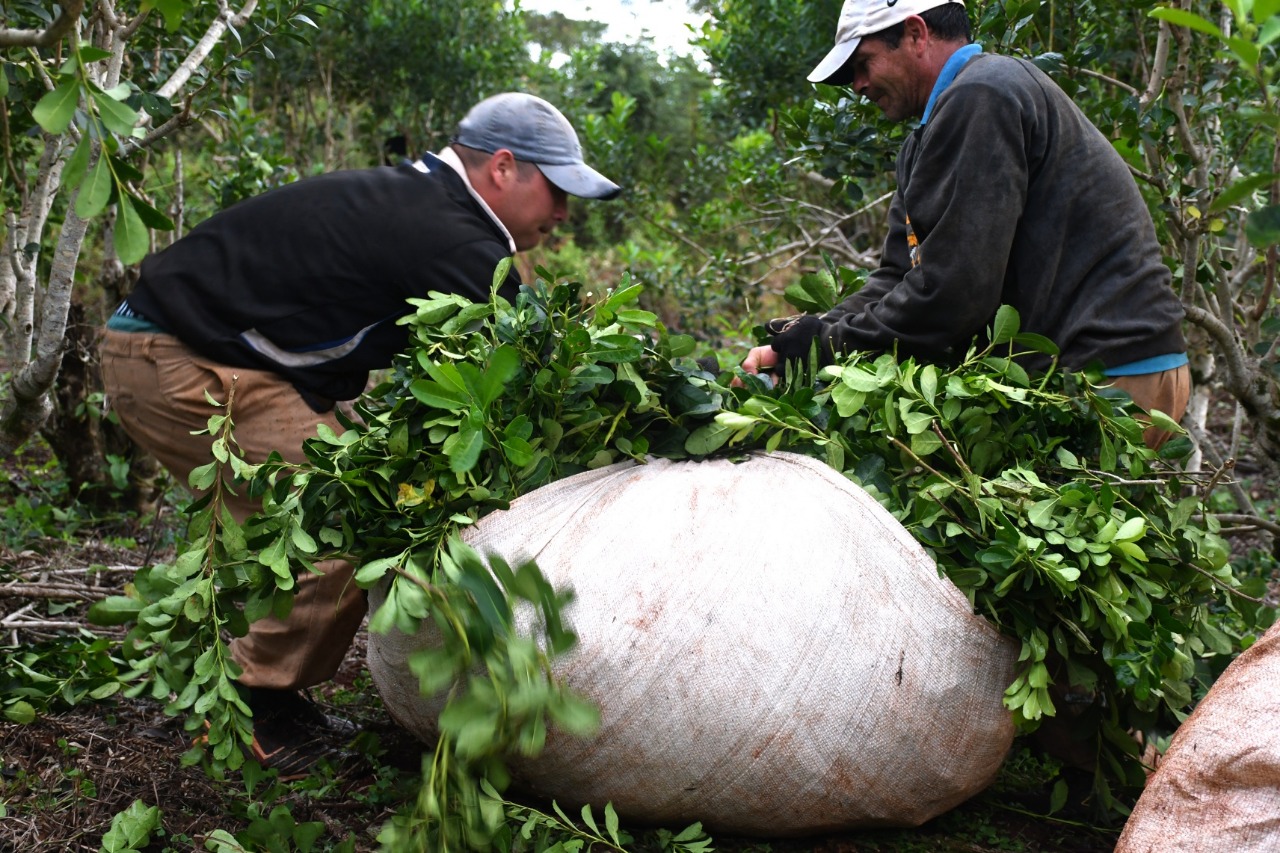
It is estimated that around 20,000 families are involved in the work of harvesting mate.
As for the tareferos, Federico added, there is a huge difference between the conditions of those who are legally registered workers and those who are not. «In Misiones there are nine thousand tareferos, counting both men and women, who are registered as such. The government has a figure of sixteen to eighteen thousand, but, from the quantities of maté harvested (numbers declared by the National Institute of the Yerba Mate, INYM), we believe that there are between twenty and twenty-one thousand. Here in the Montecarlo zone we have 540 legal workers and 180 more who work on the black market. Among the latter are those from the local ethnic tribal communities, the Guaraní tribe, who work for less money.
The bosses tell them that if they go on the official work list they’ll lose their Universal Children’s Allowance (AUH) payments from the state. This means they miss out on the benefits for legal workers, so they’re left totally unprotected. On the other hand, those who are officially registered can count on a programme called ‘Interzafra’, which used to be national, but now the province has taken over paying this benefit, because the former right wing government of Macri stopped national payments. They also have a 2,300 peso food card (about 15-20 Euros per month) which they managed to get after the labour struggles by social organizations and unions four years ago.
Also from Montecarlo, Roberto Oscar Meza, tarefero worker and spokesperson for the Front of Organizations in the Struggle/Lucha (FOL), says that although year by year the situation has been improving, it has not been enough: «We still have comrades who continue to travel rough on trucks and in vehicles that are not designed for people to travel in. It is a constant issue facing all of us tareferos who live across the whole of Misiones, something that is covered up by the provincial authorities. There is a law that says that the work tools and equipment must be provided free of charge, but here comrades are charged for certain equipment like saws and scissors, which are among the items this law says should be free».
He also told us how the quarantine situation affects them: «With this situation it is impossible to get work, because you can’t leave the house and get to work because of lockdown rules. We come home midday and our children ask us: «Dad, what did you bring to eat?» And ‘dad’ didn’t bring anything to eat today because he didn’t earn the 80, 100 or 150 pesos per bag that the workers are being paid. We have to work to pay back money that we have already spent. We go to work to pay bills, to pay off loans. Because these days, when you are forced to stay home, you get an advance payment and you have to pay it back later. That really affects us very much».
To get more extensive coverage of the yerba mate tarefero sector we also consulted Javier Gortari, who is a professor of undergraduate and graduate studies in Regional Political Economy at the National University of Misiones. Both Gortari’s master’s and doctoral theses were written on research related to the Yerba Maté economy. He also participated in his University in the provincial survey of tareferos between 2010 and 2012, and in the preparation of the Strategic Plan for Yerba Mate (2011 to 2013). He has also made presentations at conferences and published articles on the subject, and together with other colleagues he co-authored several books specialized in Mate-related subjects.
As to the quantity of workers at present, Gortari explains his calculations: «it is estimated that about 20,000 families are involved in the work, care and harvesting of yerba mate. Statistically, for a production of 800 million kilos per annum, which has been the average over the last few years, the daily yield per harvester of 450 kilos (that comes from the tarefero survey), seven and a half months of harvesting work in total made up of six months of heavy harvest – 80% of maté volume – and four months of «zafriña» which is preparatory work done before the harvests clipping early shoots etc…, another 20%). If we take an average of 15 days worked per month, eliminating rainy days, sick days, and unforeseen events, sixteen thousand tareferos are required».
As for the working and sanitary conditions of the workers, he explained: «In general terms, we can say that the situation of workers on the mate harvest hasn’t changed substantially since the description made by J. Niklison (a contemporary of Bialet Masse), who 100 years ago as an inspector of the Argentine National Department of Labour gave us the following. The working conditions: 70% informality, child labour, family exploitation, precarious means of transport to the place of the maté (cargo trucks), lack of minimal sanitary conditions in the workplaces: no toilets, no drinking water, no electricity, no telephone connection, no canteens. Camping under plastic tents, with mattresses on the ground and improvised cooking stoves. No medical care for occupational diseases or accidents. No health and social insurance. No social security contributions for future retirement».
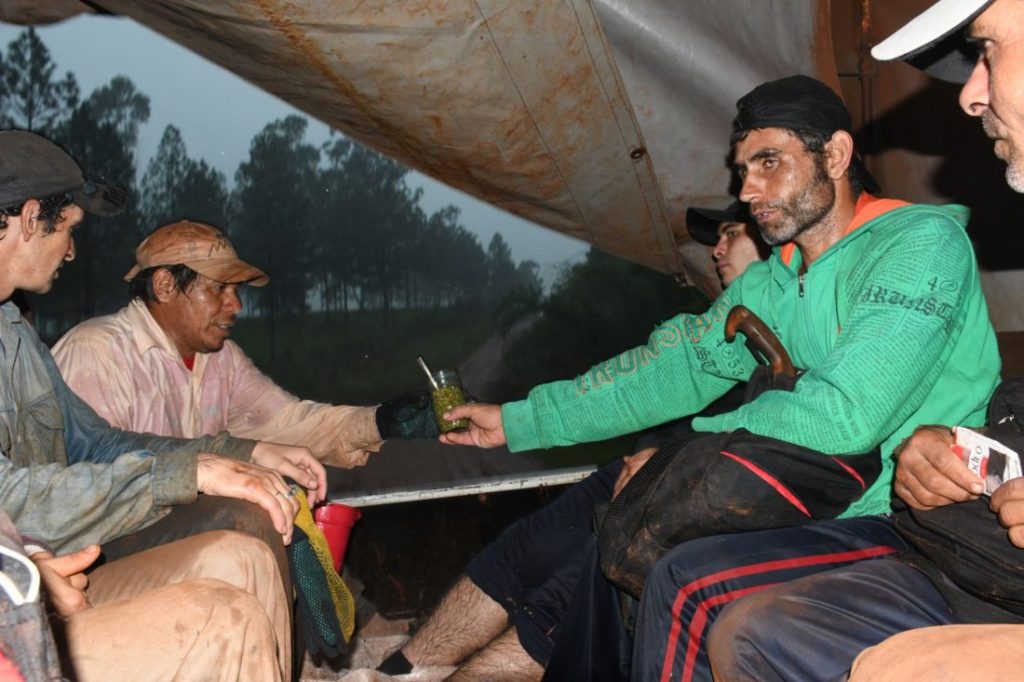
Tareferos on a break, under a Gazebo
As for the pay tareferos receive today, the researcher provided the following details: «According to resolution 286 (December 2019) of the National Commission of Agrarian Work, pay is two and a half argentine pesos (or about 2 euro cent) per kilogram. Picking 450 kilos of yerba maté a day, working 20 days a month, an average worker would receive 22,500 pesos a month which is half of what the national statistics office (the INDEC) maintains as the required income to remain above the poverty line. And this just for seven and a half months each year. The rest of the year, if the worker is registered with the government, they receive a monthly subsidy of 2,500 pesos (and grocery bags of food if he/she is not registered).
The 450 kilos of green leaf picked, once dried and packed, is equivalent to about 150 kilos of yerba mate ready for consumption. Even in Argentina, a kilo bag of maté retails at two hundred pesos on the supermarket shelf, which implies that the tarefero worker in one day produces the raw material necessary for a final product whose value is of the order of 30,000 pesos retail (and in whose costs the incidence of labour/raw material is 70%). We can calculate that a worker produces in one day more than the equivalent of his monthly salary. For the rest of the other 19 days work, all the value of this work is appropriated by the owner of the mate farm, the contractor of the tarefero crews, the drying and milling industry, transport and marketing, and taxation», points out Gortari.
Likewise, the specialist details that those who are employed in the harvest of maté are recruited from settlements in the interior of Misiones, such as Oberá, San Vicente, Montecarlo, Jardín América, Aristóbulo del Valle, Andresito, Apóstoles and San Ignacio, where «80% of the houses are made of wood, 40% have cardboard roofs and a earthen floor, 60% are not connected with access to running potable drinking water, 75% use a latrine and many use wood as cooking fuel. Some travel every day to and from the maté farm when it is relatively close. If they work further away, which makes their transportation costs higher, they camp on the farm during the week, or sometimes for longer to make the travel worthwhile,» says Gortari, based on data from the Provincial Survey of Tareferos.
Translation: Tony Phillips, Photos: Juan Amadeo and AnRed
*The books published by Javier Gortari and in his co-authorship are: “Economía Regional Yerbatera 2002-2016: logros y limitaciones en 15 años de funcionamiento del INYM (Edunam, 2018)”, “El agro misionero y la represión durante la última Dictadura cívico-militar: testimonios (Edunam, 2018)”, “Tareferos: vida y trabajo en los yerbales (Edunam, 2017)”, “Dinámica agraria y Políticas públicas: desigualdades sociales y regionales (Edunam, 2016)” and “De la tierra sin mal al tractorazo: hacia una economía política de la Yerba Mate (Edunam, 2008)”.
